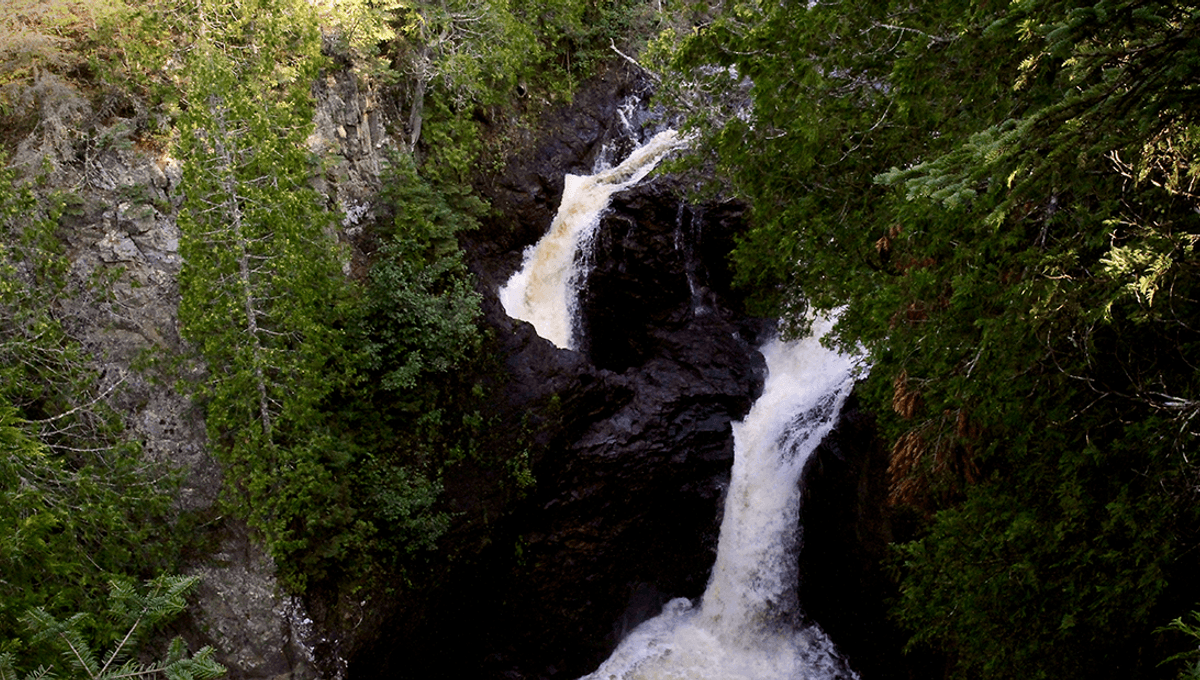
In Judge C. R. Magney State Park, Minnesota, there is an unusual feature known as the Devil’s Kettle, where the Brule River splits in two around a large rock. While the bulk of the water goes over a waterfall and continues downstream, a significant amount of it travels down into a hole and then…. sort of disappears.
For decades, we didn’t actually know where this water went, but not for lack of trying. Visitors to the park have reportedly thrown objects into the river, ranging from ping pong balls and GPS trackers to (according to local rumor) a car, in order to try and find the objects when they reemerge. However, after the objects were dropped into the hole, they did not come back out.
Theories had it that the water separated from the main River Brule, traveled by underground tunnels and emerged somewhere in Lake Superior, or elsewhere.
“I’ve heard locals describe the possibility that this water splits at the waterfall and some of it flows into Canada,” park manager Peter Mott told MPR News in 2017. “I’ve actually heard people suggest that it may flow somehow back into the Mississippi River.”
This looked unlikely, as underwater tunnels tend not to form easily in the hard rock found in the area. So where is the water, and the various objects thrown into it, going?
In 2016, a team from the Minnesota Department of Natural Resources decided to examine the water flow of the river before the split, and after the main waterfall, to see if any water was being lost. Above the Devil’s Kettle, the water was flowing at 3.48 cubic meters per second (123 cubic feet per second). And below the waterfall, it was flowing at 3.43 cubic meters per second (121 cubic feet per second).
“In the world of stream gauging, those two numbers are essentially the same and are within the tolerances of the equipment,” mapping hydrologist Jeff Green, who was part of the research team, explained in a statement. “The readings show no loss of water below the kettle, so it confirms the water is resurging in the stream below it.”
As for the missing objects, there is a simple explanation: they’re getting shredded in much the way you’d expect if you lob them down something named the Devil’s Kettle.
“The plunge pool below the kettle is an unbelievably powerful system of recirculating currents, capable of disintegrating material and holding it under water until it resurfaces at some point downstream,” Calvin Alexander from the University of Minnesota, who was also part of the project, added.
The team believe that the water rejoins the rest of the river almost immediately after the waterfall, though it’s not yet known where exactly this happens.
Source Link: The Devil's Kettle: For Decades, Nobody Knew Where This Underground River Led